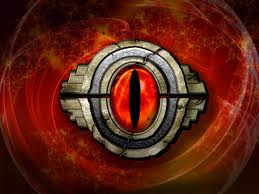4 posts
• Page 1 of 1
I have a serious question
-

RUby DIaz - Posts: 3383
- Joined: Wed Nov 29, 2006 8:18 am
Bone meal is a mixture of crushed and coarsely ground bones that is used as an organic fertilizer for plants and formerly in animal feed. As a slow-release fertilizer, bone meal is primarily used as a source of phosphorus.
Bone meal once was often used as a human dietary calcium supplement. Research in the 1980s found that many bone meal preparations were contaminated with lead and other toxic metals, and it is no longer recommended as a calcium source.
As a fertilizer, the N-P-K ratio of bone meal is generally 4-12-0, though some steamed bone meals have N-P-Ks of 1-13-0. Bone meal is also an excellent organic source of calcium.
Organic fertilizers usually require the use of microbes/bacteria in the soil in order to make the nutrients in the fertilizer bio-available. That can result in irregular release of phosphorus/calcium. In sterile potting soil, there may be no microbes to release the nutrients.
Finely ground bone meal may provide quicker release than coarsely ground.
Phosphates do not easily pass through soil. So mixing the bone meal with the soil or putting it in the planting hole can help.
Bone meal is frequently used in preparing holes for blooming bulbs, for the phosphorus. It may help tomato plants prevent blossom end rot. However, blossom end rot can happen even though sufficient calcium is present if watering is irregular. High phosphorus fertilizers are also useful for transplant root growth.
Bone meal once was often used as a human dietary calcium supplement. Research in the 1980s found that many bone meal preparations were contaminated with lead and other toxic metals, and it is no longer recommended as a calcium source.
As a fertilizer, the N-P-K ratio of bone meal is generally 4-12-0, though some steamed bone meals have N-P-Ks of 1-13-0. Bone meal is also an excellent organic source of calcium.
Organic fertilizers usually require the use of microbes/bacteria in the soil in order to make the nutrients in the fertilizer bio-available. That can result in irregular release of phosphorus/calcium. In sterile potting soil, there may be no microbes to release the nutrients.
Finely ground bone meal may provide quicker release than coarsely ground.
Phosphates do not easily pass through soil. So mixing the bone meal with the soil or putting it in the planting hole can help.
Bone meal is frequently used in preparing holes for blooming bulbs, for the phosphorus. It may help tomato plants prevent blossom end rot. However, blossom end rot can happen even though sufficient calcium is present if watering is irregular. High phosphorus fertilizers are also useful for transplant root growth.
-

Alba Casas - Posts: 3478
- Joined: Tue Dec 12, 2006 2:31 pm
Bone meal is a mixture of crushed and coarsely ground bones that is used as an organic fertilizer for plants and formerly in animal feed. As a slow-release fertilizer, bone meal is primarily used as a source of phosphorus.
Bone meal once was often used as a human dietary calcium supplement. Research in the 1980s found that many bone meal preparations were contaminated with lead and other toxic metals, and it is no longer recommended as a calcium source.
As a fertilizer, the N-P-K ratio of bone meal is generally 4-12-0, though some steamed bone meals have N-P-Ks of 1-13-0. Bone meal is also an excellent organic source of calcium.
Organic fertilizers usually require the use of microbes/bacteria in the soil in order to make the nutrients in the fertilizer bio-available. That can result in irregular release of phosphorus/calcium. In sterile potting soil, there may be no microbes to release the nutrients.
Finely ground bone meal may provide quicker release than coarsely ground.
Phosphates do not easily pass through soil. So mixing the bone meal with the soil or putting it in the planting hole can help.
Bone meal is frequently used in preparing holes for blooming bulbs, for the phosphorus. It may help tomato plants prevent blossom end rot. However, blossom end rot can happen even though sufficient calcium is present if watering is irregular. High phosphorus fertilizers are also useful for transplant root growth.
Bone meal once was often used as a human dietary calcium supplement. Research in the 1980s found that many bone meal preparations were contaminated with lead and other toxic metals, and it is no longer recommended as a calcium source.
As a fertilizer, the N-P-K ratio of bone meal is generally 4-12-0, though some steamed bone meals have N-P-Ks of 1-13-0. Bone meal is also an excellent organic source of calcium.
Organic fertilizers usually require the use of microbes/bacteria in the soil in order to make the nutrients in the fertilizer bio-available. That can result in irregular release of phosphorus/calcium. In sterile potting soil, there may be no microbes to release the nutrients.
Finely ground bone meal may provide quicker release than coarsely ground.
Phosphates do not easily pass through soil. So mixing the bone meal with the soil or putting it in the planting hole can help.
Bone meal is frequently used in preparing holes for blooming bulbs, for the phosphorus. It may help tomato plants prevent blossom end rot. However, blossom end rot can happen even though sufficient calcium is present if watering is irregular. High phosphorus fertilizers are also useful for transplant root growth.

I thought it was a made up in-game word!
-

Lavender Brown - Posts: 3448
- Joined: Tue Jul 25, 2006 9:37 am
4 posts
• Page 1 of 1
